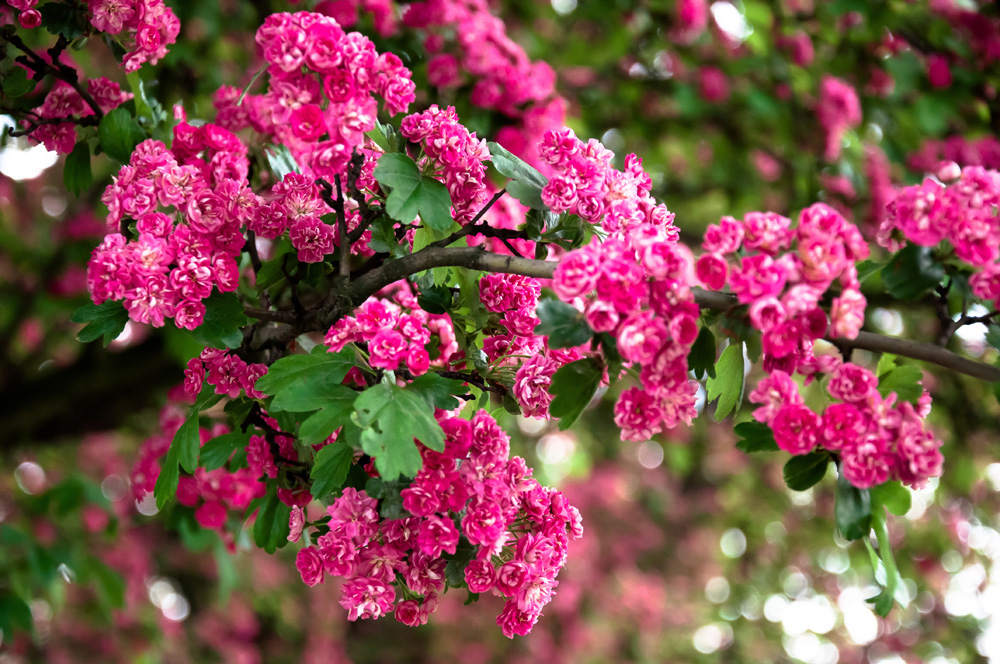Lagerstroemia sp.
Common Name:
Crape myrtle

General information:
Crape myrtle makes an excellent bonsai due to its exquisite branch ramification and the contrast of the red upon silver of the peeling bark. Native to Asia, the crape myrtle is very common in the southern US, having been introduced over 150 years ago. It has small pink, white or purple flowers, but is often displayed in winter to show off its trunk and branch structure. It gets its common name from its crepe-like, crinkled petals, and the resemblance of its leaves to the true myrtle, Myrtus communis.
Family:
Lythraceae
Lighting:
Full sun.
Temperature:
Zones 7-9A, although some of the dwarf cultivars can be grown as far north as zone 5. Can be successfully grown as an indoor plant; if this is done it should be kept at a temperature of 45-54 degrees in the winter to stimulate dormancy - the crape myrtle should drop its leaves. If it is exposed to a combination of warm temperatures and low light (as inside many houses in winter) the crape myrtle’s new growth will be leggy and sappy.
Watering:
Frequently in spring, moderately during the rest of the year. Reduce watering in winter and just before flowering to encourage bud formation.
Feeding:
Every two weeks in spring-autumn. Alternate a general purpose plant food or bonsai food with a low nitrogen tomato fertilizer.
Pruning and wiring:
The crape myrtle flowers at the ends of its shoots, so one must take care with pruning if flowering is desired. The safest method is to prune only in autumn, and in any case, a good autumn pruning will stimulate bud production for next year. Betsy recommends cutting the crape myrtle back severely, then allowing it to grow freely for a year to thicken the trunk. The next year, pinch the tree constantly to promote branch ramification. If pruning is discontinued shortly before the flowering period, it may still flower. May be wired from spring to autumn, taking care to protect the bark. The branches are delicate, however, and it is just as easy to shape through pruning due to the excellent branch ramification.
Propagation:
From seed in spring, or by softwood and semi-hardwood cuttings taken in spring or summer.
Repotting:
Every 1-3 years in early spring to summer, most safely done before bud burst. Use basic soil mix.
Pests and diseases:
Pests:
Scale and aphids are other common problems. The plant will only flower during a warm, dry summer.
Diseases:
Powdery mildew, although mildew resistant varieties are available.
Some species suitable for bonsai:
Lagerstroemia - Crepe myrtle
Lagerstroemia hirsuta - this native of India and New Guinea has purplish red or white flowers. Needs temperatures above 50 degrees, but also likes a cooler period in winter.
Lagerstroemia indica: crape myrtle, Chinese crape myrtle - Grows to 20 feet tall, with 9 inch flower clusters. There are many cultivars. Can take temperatures as low as 43 degrees.
Lagerstroemia indica ‘Alba’: white crape myrtle
Lagerstroemia indica ‘Amabilia’: purple crape myrtle
Lagerstroemia indica ‘Cordon Bleu’ - A dwarf with lavender flowers.
Lagerstroemia indica ‘Pixie Pink’ - Very dwarf, with pink flowers.
Lagerstroemia speciosa: Queen’s crape myrtle - This tiny tropical plant grows to only 8 inches. Its flowers are pink to red. Keep at 50-59F in winter.
Bibliography:
USDA Fact Sheet ST-342
University of Florida, Agricultural Extension Service, Fact Sheet ENH-52
Compiled by Sabrina Caine Edited by Thomas L. Zane
